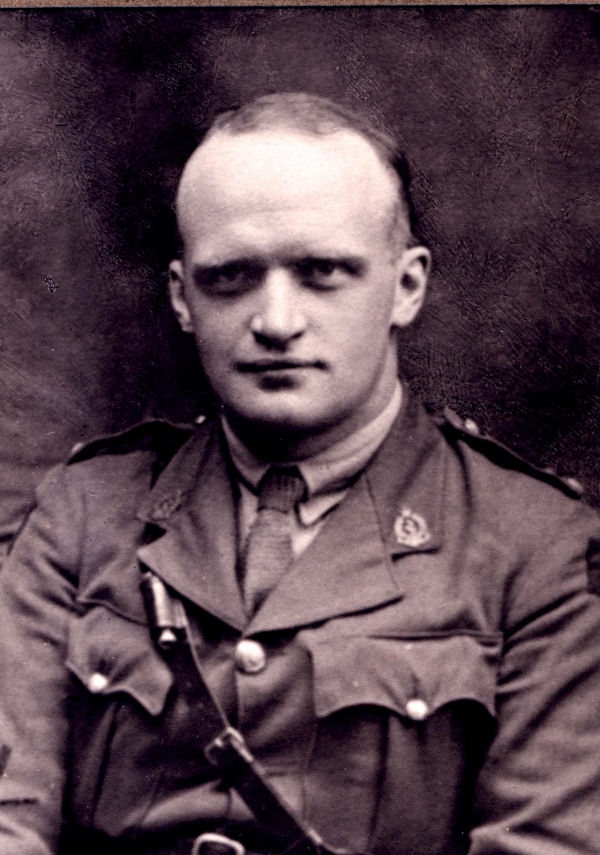Lieutenant Colonel Heber Havelock Moshier captured outside his No 11 Canadian Field Ambulance dugout by CWRO photographer Lieutenant William Rider-Rider shortly before his death in action on 29 August 1918 in the Second Battle of Arras.

The contribution of medical care to the British Empire coalition by the Province of Alberta during the Great War impressive. High enlistment levels of physicians from the Prairies (30%–50%) compared with the rest of the country (10%), finally resulted in a severe shortage of physicians at home.
Enlistment of Major Heber Havelock Moshier
Moshier born 1 November 1889 in Sombra, Lambton County, Ontario, Canada. At this time, residing at the University of Alberta in Edmonton as Professor of Physiology. In addition, one of the founders who helped establish the School of Pharmacy at the University of Alberta in 1915.

Heber stood 5′ 9″ tall, 165 pounds, wife Ida Moshier of London, England, also mother May J Moshier of 11 Selby Street, Toronto.

France
Major Heber Havelock Moshier proceeds overseas with No 11 Canadian Field Ambulance on 10 August 1916.

No 11 Canadian Field Ambulance
Organized at Edmonton and Winnipeg in March 1916 initially under the command of Lieutenant-Colonel John Douglas McQueen. The mobilization under the control of a committee of civilians, composed of the presidents of UBC, U of Alberta, U of Saskatchewan and also U of Manitoba. On 16 April 1916, Major Moshier considers Lt Col McQueen following his medical exam.

The unit left Halifax 22 May 1916 aboard ADRIATIC, and later arrived in England 29 May 1916 with a strength of 10 Officers, 179 other ranks. Finally arrived in France 11 August 1916 with the 4th Canadian Infantry Division.

Major Heber Havelock Moshier granted leave of absence 2 March 1917, and later rejoined his unit on 13 March 1917.

Promotion of Major Moshier
Lt Col McQueen awarded the DSO on 4 June 1917. Major Moshier assumes command of No 11 with the departure of Lt Col J D McQueen DSO later on Friday, 21 September 1917. McQueen later serves with Canadian Red Cross Special Hospital, and also No 1 Canadian General Hospital.

Major Heber Havelock Moshier to be acting Lieutenant Colonel, CAMC, 6 October 1917.

1918
Lieutenant Colonel Heber Havelock Moshier granted 14 days leave of absence, 16 March 1918. Moshier Mentioned in Despatches, London Gazette No 30706 later on 28 May 1918. Lieutenant Colonel Heber Havelock Moshier granted 7 days leave to Paris, 12 July 1918

Second Battle of Arras
Lt Col Moshier issues his last Operation Order (No 32) at 09h30, Thursday 28 August 1918. However, the unit’s destination known only by the Officer Commanding Train. A dull day, with rain at intervals, the unit arrived at Acq railhead at 01h30, marched to the main road, and finally conveyed to Berneville at 04h30.
On 29 August 1918, Horse Transport of the unit followed that of 102nd Battalion, arriving Berneville at 11h00, and proceeded to Neuville-Vitasse via Wailly, Fecheux and Mercatel, finally arriving at Neuville-Vitasse at 21h00. Orderly Room and HQ details stayed behind till the afternoon.
The Battle of the Scarpe
With temporary HQ located east of Telegraph Hill (Sheet 51b.N.8.a.9.3) on Wancourt Road, Lieutenant Colonel Heber Havelock Moshier initially advances to find a more suitable HQ. Whilst traffic blocked by cross roads near Wancourt at 14h20, No 11’s Commanding Officer riding in the front seat of an Ambulance car. Just prior to moving on again, a piece penetrating the hood of the car, striking him on the head, killing him instantly.
Shrapnel wounds to his head and also thigh. In addition, Captain Donald George Kennedy Turnbull suffered a GSW to his face. The scene revisited by Lt William Rider-Rider following the Armistice in early 1919 (MIKAN No 3329419 below).

Lt Col Moshier’s body later admitted to No 5 Canadian Field Ambulance.

On Friday, 30 August 1918, the body of Lt Col Moshier fetched from No 5 Canadian Field Ambulance by Captain C Kerr, and under authority of ADMS, 4th CID, later conveyed to Villers-au-Bois Cemetery.
Villers Station Cemetery
Interment took place later at 1115 am, 30 August 1918, conducted by Major William Leonard Baynes-Reed DSO (11th CIB), Captain MacDonald pronounced the Benediction. Chaplain Baynes-Reed a humble parish priest serving the Toronto east-end Anglican church of St John’s Norway when the Great War broke out in 1914.

Major William Leonard Baynes-Reed DSO
Baynes-Reed’s DSO cites conspicuous gallantry capturing Le Quesnel, near Amiens, in France.
“He was constantly in the forward area, attending to the wounded and ministering to the dying under intense firing of all descriptions. His unselfish devotion to duty and his courage were splendid examples and his services earned for him the respect and affection of all those among whom he worked.”

Captain D G K Turnbull MC, Captain J T Stirling, Captain J A Pare and Hon Captain and also Quartermaster C F Currie pall bearers for Lt Col Moshier. Followers, Colonel C A Peters DSO (DADMS 4th CID), Captain C Kerr MC (DADVS 4th CID), Major Paulin, Sergeant-Major C E McArthur DCM, Sergeant Long and also Private Lister.
Villers-au-Bois a village in the Department of the Pas-de-Calais, 11 kilometres north-west of Arras. The cemetery about 2 kilometres north-west of the village.
Wavre, Belgium
Surviving Officers and NCOs of No 11 Canadian Field Ambulance gathered for a group photo on 24 April 1919 while awaiting demobilization in Wavre, Belgium.

Legacy
Moshier left an indelible mark on the University of Alberta‘s history that extends far beyond the battlefield. Before taking military leave in 1916, Moshier recruited James Bertram Collip. Collip took over Moshier’s courses and later co-discovered insulin along with Frederick Banting, Charles Best and John MacLeod.
Finally, Moshier remembered today through the Faculty of Medicine & Dentistry’s prestigious Moshier Memorial Gold Medal, endowed by the Volunteer Overseas Medical Officers’ Association of Edmonton, awarded annually to a graduating medical student with outstanding academic merit.
